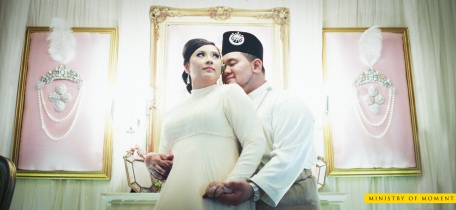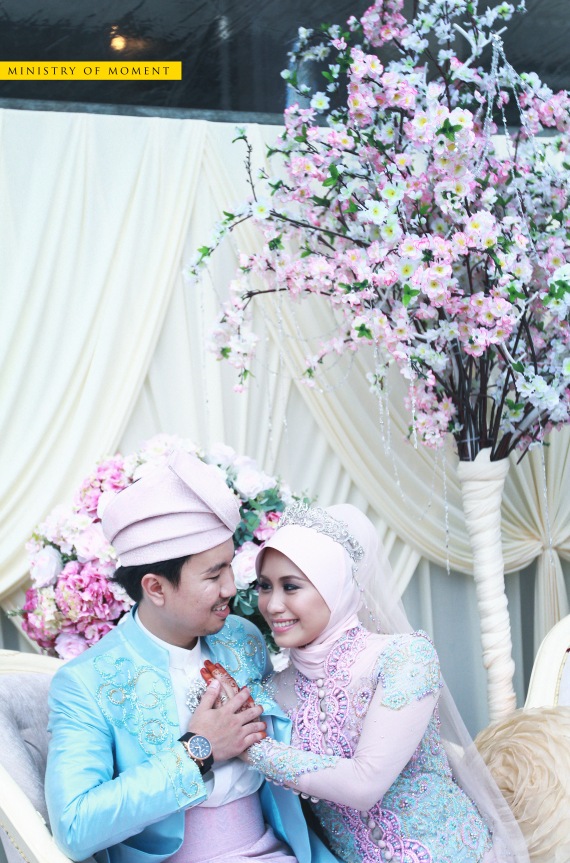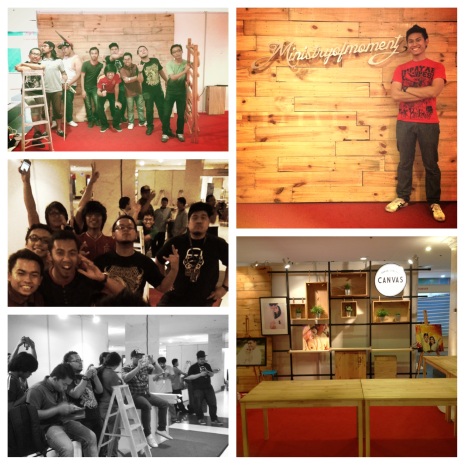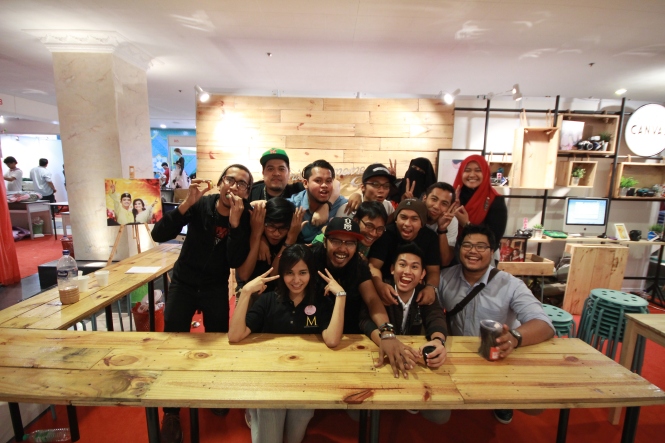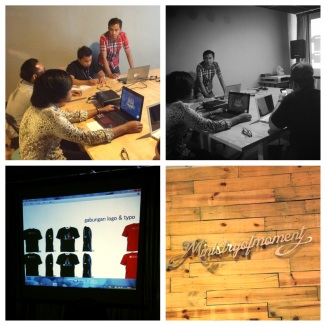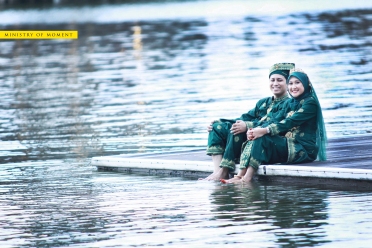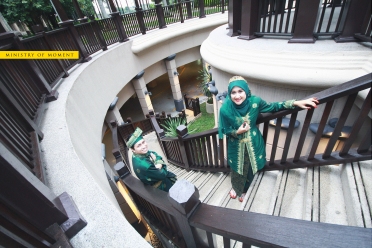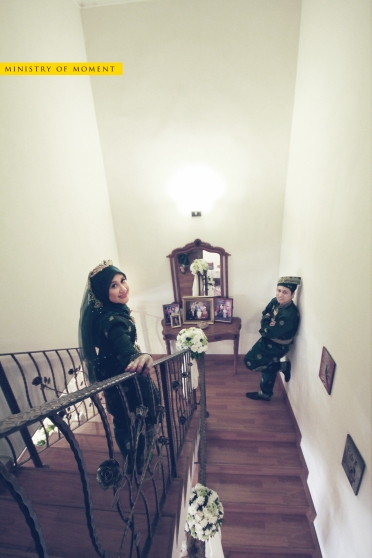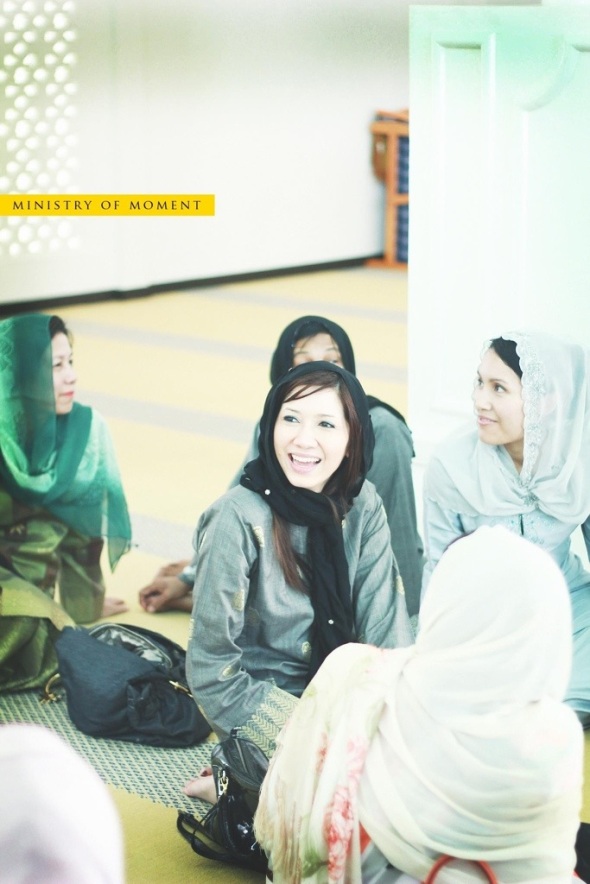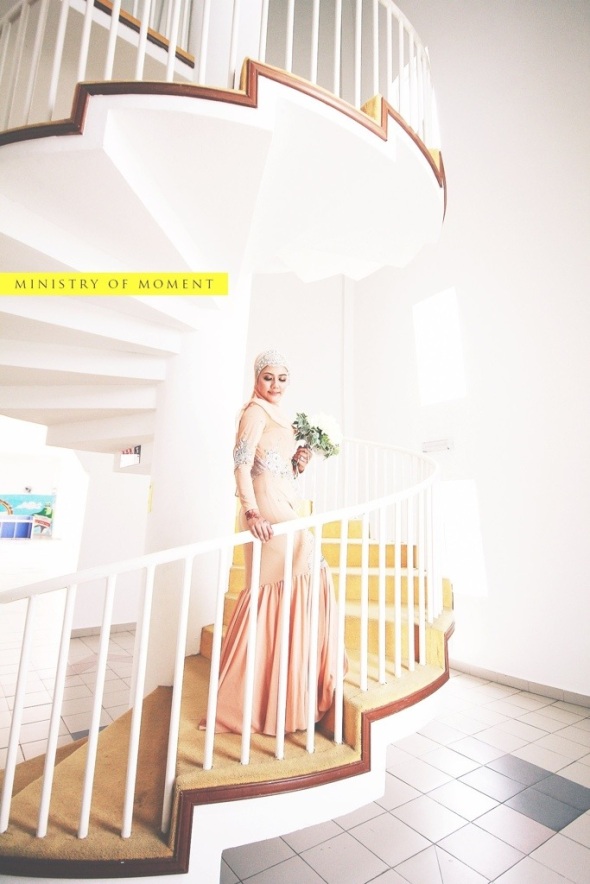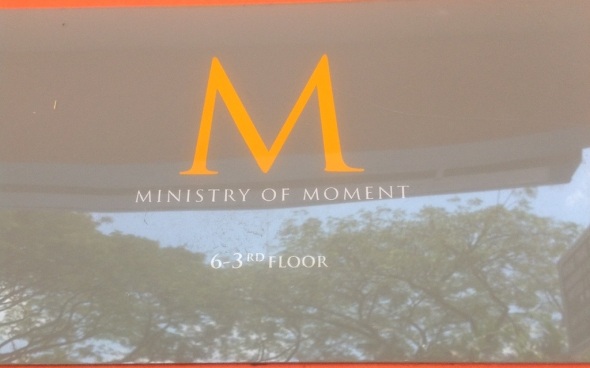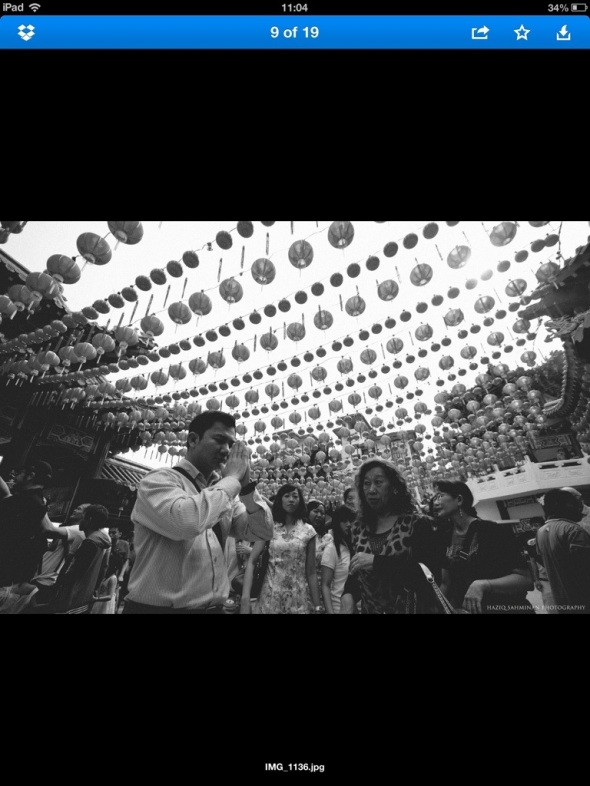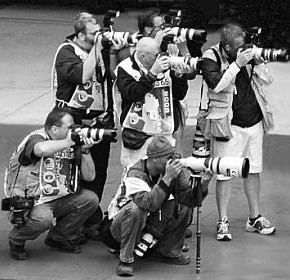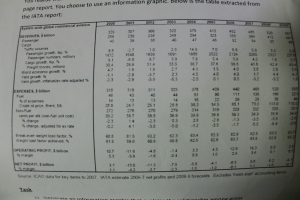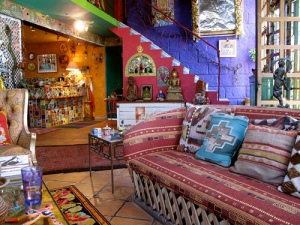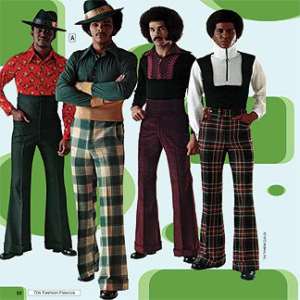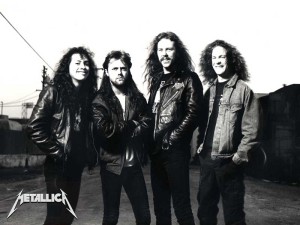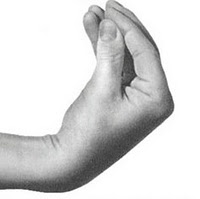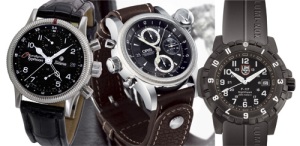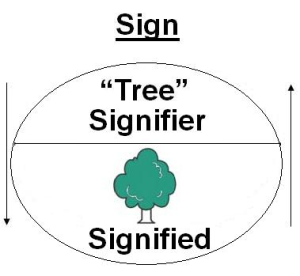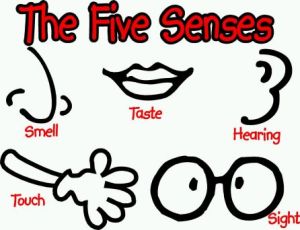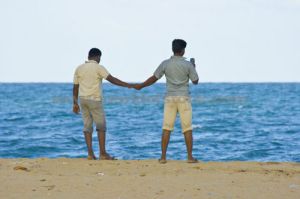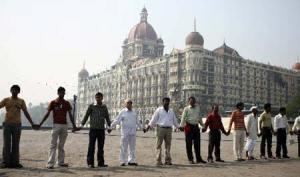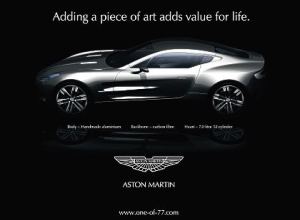Busy April
So April has been very busy for me and the team. Editing workshop along with my wedding assignment in Singapore, Kelantan and not forgetting the task that I’ve been given with my colleague to cover the groom side without the guidance of a senior photographer. We accept the challenge with an open arm. In this business you need to have a strong mentality to face every situation in the event. It’s quiet an experience for me to have an opportunity to shoot various wedding in different places. So far I’ve spent 20k on my shutter count for this internship. Quite surprising for myself in the development of spending shutters. I learned that public relation is very vital for a photographer as he/she needs to be the ice-breaker in order for their to comfortable with them thus making their work easier. After 2 months working as an intern at ministry of moment I started to plan my shoot not only for capturing beautiful moments and timeless portraiture but during the shoot I’ve already plan on how to design the album for the client. Meaning to say that working as a designer on a weekdays and shoot wedding on the weekend has helped me developed to be more efficient in various way in the wedding business. So here are some photos that I’ve taken in the month of April 2013.

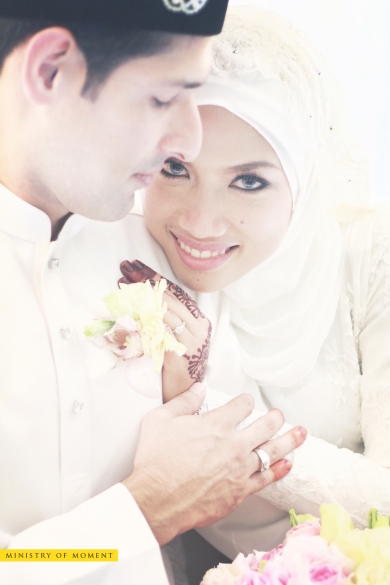

 Picture above was taken at Bangi and I’ve been given the opportunity to assist Fuad Topa a renown photographer in Malaysia.
Picture above was taken at Bangi and I’ve been given the opportunity to assist Fuad Topa a renown photographer in Malaysia.
Singapore Experience
I went to Singapore to shoot 2 wedding events and I must say it was quite an amazing experience. From Brunei to Malaysia to Singapore to shoot a wedding experiencing different custom had amuse me from the start of my internship program. 
Event in Selangor
Experience March with The Troopers
So march has ended with a high note for me and the company with lots of wedding event, projects,and business expo which was held at PWTC. Being here as a designer/ junior photographer at Ministry of Moment has taught me a lot especially in terms of creative side and not forgetting the business side as well. For the first 2 weeks of March my colleague and I were preparing for the Wedding expo which was being held in PWTC,Kuala Lumpur. My boss wanted to make the company booth backdrop made out of wood, so after a few design and changes we decide to go for the propose design . It took us a week and a half to build it from scratch where we took a wooden cargo box (I don’t know where my boss get these things) which we dismantle it one by one (back pain will be your best friend). I’ve taken the liberty to record some of the process until the expo starts which I will post it in the near future. We are not only building backdrop for the expo but also some tables and boxes with using the same materials that we used to make the back drop. The reason why we gone so much trouble for making this happen is to launch the company new wedding package and also new packaging for the finish product. To lift up the company image we need to create new idea, vision and concept that could attract future clients. After the expo I’ve learned that running a business in the creative industries is very lucrative but also very fragile. I can see competitors from other companies came to our booth in disguise (as couples) asking about our new deal and product (they even asked us where we print and the material that we used) and it happens all the time during an expo. I’m not saying creative industry is the most fragile business to run because any business has their own risk and everyday new people will come and go in any business. What I am trying to say is that, being here in Malaysia has open my eyes to the bigger picture in pursuing a business in the creative industries.

During the expo we’ve been taught on how to communicate with the clients efficiently. Its was a pleasant experience for me although communicating with the clients using Malaysian language is quite challenging. I’m not saying I can’t speak Malay, I do but asking a Bruneian to speak proper Malay is like asking an Irish or Scottish to speak proper English if you get what I mean.
THE PROJECT
After the Expo we (interns) been asked to execute a project where I’ve been asked to create a photo manipulation before finishing my internship, I haven’t done anything yet as I haven’t decide the concept that I wanted to make although presenting my option in photo manipulation has been done. I will show the process in the near future once I have made up my mind about the concept.
Wedding Coverage Portfolios
As usual, every week I was assigned to assist Ministry of Moment senior photographer. In my opinion, Art of Seeing is not only for the gifted but to those who strive for perfection in their artwork.
Discovery year- internship programme at Ministry of Moment Kuala Lumpur
2013, the start of my new year is by undergoing an internship programme organised by University Brunei Darussalam on my 6th semester. I have selected Ministry of Moment as my host agency for the program. I choose this company because of its quality in both photography and their system in running this business.
Before coming to M.O.M, I applied through email and eventually they approve my application to work there as an intern. There are several process that need to be done before flying off to Malaysia, which include monthly allowance, place to stay and working permit (which I have to make one in malaysia).
I started working on the 4th February 2013 and as stated by the university I should be finishing on the 30th June 2013 but I am still in the process of extending my stay as I believe that working in a dynamic company for 5 months to learn the photo works and their business management is not enough though extending the period to another month wouldn’t be that sufficient as well.
Upon my arrival at MOM I have been greeted by the Owner of the company named Shafiq Akmal and he gave me a little bit of briefing on what’s going on in the company and how it works. Although I applied for the post as a photographer, they assign me as a graphic designer during the weekdays and in that process i learned on how to make a custom album. On the weekends I will be following M.O.M senior photographers to shoot weddings and corporate events. Since my arrival I have been given a chance to work on two wedding assignments and here are some of the photos taken by myself. All rights reserved.
Apart from all that, graphic and portrait training is also being provided by the company to ensure the quality of their works meet the company standards.
During my free time I went for street photography and I did a street shoot during the Chinese new year at Thean hou temple in Kuala Lumpur near Jln Robson.
Landscape
Equipment: Canon 60D with 18-55mm kit lens.
New Chapter!
Its 2012! and its not too late for me to say Happy New Year! Another year another chapter in our lives and so as my post in this year word press. As for today onwards! this blog will be fully utilized for my Photography & Videography work. I don’t have a specific genre for my type of work as I am still and forever will be a student in this field..=) do leave your comments and critique regarding on my work that would really help me to improve my skills..
Thank You and enjoy browsing my work!
Week 12: Ethics of Photojournalism
Photojournalist worked as an informer to the world on what is happening around them. Photographic and video image can connect people around the globe through the language of video communication. It could also inspire people and exposed the people wrong doings and it can also reveal great truth. Every picture that has been posted are believed to be the truth as photojournalism has a long tradition of trust from the public. The phrase “camera never lies” is always associated with photography. Although it is true that camera never lies as the machine is unemotionally capture the moments in time. But the one who handle the camera is the one who will be question on how far is the truth in the photos, because the handler will decide on the how (light, angle and etc)
Today, photojournalist are now using camera that is being processed digitally which means that it can be manipulated in any means. So here again, the credibility of a photojournalist has been put again into questioned. To avoid such things happen, the National Press Photographer Association has set several photojournalism code of ethics. The reason for NPPA created this code of Ethics is to provide the highest quality of photojournalism to the public. It’s also being created to strengthen the public trust to its profession. In this week journal, I will explain on the 5 code of ethics about photojournalism.
1)Photo manipulation is prohibited.
Manipulation is not just by the use of today’s technology as nowadays photojournalist are using digital camera to capture the image they want. Its not just the change of color tone that could cause more effect in the picture but directing someone to pose in it will be also unethical. Therefore a journalist should be accurate and comprehensive in presenting the image that they have taken.
2) The picture itself needs to be taken by the journalist
Photos are one of the most powerful elements in journalism, as mention by Lester(1999) “when truthfulness and visual impact combined in a powerful picture, such an image can shock the public” Every picture that the journalist wants to make a story out of it needs to be taken by themselves because it is their responsibility to take and to show the public about the real events.
3)Treat the subject with respect and vulnerability
Every journalist needs to take account that they have the power whether to publish the picture that they took or not. James Glenn Stovall (2009) had set some guidelines for the photojournalist to take account before publishing a photo. This is because every photos could cause sensitivity to the public if there is no proper consideration in publishing the photos. The elements that Stovall(2009) mentioned are:
- Death and gore
- Grief
- Embarrassment of individuals
- Sexuality
- Criminality
- Juveniles
- Possible negative stereotyping of groups
Photojournalist can take as many photos as they want, but in the end, they have to make the final call on which photos should be published.
4) Nothing but the truth
Photojournalist must be honest, courageous and fair in gathering information as well as reporting it. A photojournalist should not plagiarize on other photojournalist work, for example: taking other photojournalist photo for their own story which could lead to a serious offense. He or she might get sued for this.
5)Be complete and provide context when photographing or recording subjects
Caption and cutlines are important in photojournalism. Without it, it may leads to a misinterpretation from the reader. It work as an anchorage for the picture to be interpreted the way that the photojournalist wants.
Reference
Bersak, D., R. ( 2006). Ethics in Photojournalism: Past, Present and Future. Master Thesis. Massachusetts Institute of Technology. Retrieved 12th November, 2011, fromhttp://web.mit.edu/drb/Public/PhotoThesis/
National Press Photographers Associations. (2011). Code of Ethics. Retrieved 12th November, 2011, from
http://www.nppa.org/professional_development/business_practices/ethics.html
Smith, K., Z. (1996). SPJ Code of Ethics. Retrieved on 12th November 2011, from http://www.spj.org/ethicscode.asp
Stovall, J. (2009). Photojournalism Ethics. Retrieved on Nov, 12, 2011 from http://www.jprof.com/photojn/photojn-ethics.html
Lester, P. M. (1991) Picture manipulation in Photojournalism: An Ethical Approach. Retrieved on Nov 12, 2011, from http://commfaculty.fullerton.edu/lester/writings/chapter6.html
Image Retrieved from:
Google Image
Week 11: Information Graphics
In week 11, we were given a task to analyze a data from the Air Transport Association (IATA). To evaluate the findings we were ask to make a graph out of it.
The picture above shows the detail that IATA provides to their shareholders to explain the impact of rising fuel and operating cost on nett revenues.
Answer:
This graph shows a clear view on the relationship among gross revenue, gross expenses, cost of fuel and cost of fuel as percentage of expenses from the year 2000 till 2009.
2)
The reason why I choose the line graph instead of the other info graphs is because of the numbers of data that I need to analyze (which is to compare 4 data). By using the line graph I would able to show the comparison of each data from time to time. By having each of the lines using different color code, the readers would easily read this info graph. In order to make an info graphs to be effective it needs to have the basic feature as well which is the key that explains every symbols and icons in the graph.
However there is a disadvantage in using this line graph where it shows a little comparison between gross revenue and gross expenses. Although the exact value can be explain through the line graph but it is not visually appealing. This could lead to a misinterpretation for the readers on the details been that has been shown in the info graph.
In conclusion, the reason why we use information graphic is to make the information as interesting as possible as well as to make communication more efficient between the producer and the interpreter. As Pettersson(1993) stated and I quote “Information graphics provide the reader with a rapid and easily grasped overall view of a message and are therefore highly suitable as an introduction to and summary of a subject.”
Reference
Petterson, R. (1993). Visual Information (2nd ed) (pp. 169-175). New Jersey: Educational Technology Publications.
Week 10: Games and Avatars
We live in the modern world where technologies is widely been use in our daily life. It helps to make our lives easy. For examples; Cars being used to travel from point A to Point B, mobile phones are used to communicate people around the world and computers, well in my opinion it pretty much do everything that I need that needs to be done whether it is my assignments or my booking for my holiday airline ticket. But the question is, how far do we rely on technologies? if keep on relying on it in every single task, does that mean we are cyborg in nature?
Nowadays millions of people are connected to the cyberspace, they would spend hours in front of the computers just to use the internet because they are so tied up to it. Some of them uses the internet to play online video games (World of Warcraft, Counterstrike, Sims, League of Legends), some of them use it for social networking such as Facebook, Twitter, MySpace and etc. Being a member of the social media will also makes us be apart of virtual community. As being stated by William Gibson Cyberspace is a “consensual hallucination” because it provides the virtual reality to the users of an alternatives views of the world. By being in the virtual reality we are able to change almost everything in ourselves. From our appearance to the place we lived. Some of us may feel more comfortable to be in the virtual world than the real world because they can feel the freedom in communicating with the other user.
Lets look at the video below.
This movie is called surrogates, it illustrate on how robot is being used in the future to work, socialized and even have sex, where the humans will only stay at home but can feel everything that the robot encounter. The idea of this technology in the movie would not be impossible to create in the real world as technologies are being developed everyday. What do you think of people who uses the pacemaker or other types of body mechanical support. Are they being consider as half cyborg?
In conclusion, technologies are used as a tool to make our lives easy. Since I lived in the age of modern generation I do agree that we are cyborg in nature as we keep on relying on technologies in every single task we do. Meaning to say that technologies makes our world go round. Without the help of technologies we might not survive in this world. I’m not saying that we will die but eventually we will lose to someone in this competitive world.
Reference
Robins, K. (2000). Cyberspace and the world we live in. In Bell, D. and Kennedy, B.M. (eds.), The cybercultures reader (pp.77-95). London: Routledge.
Week 8: Photography
Every time we look at a picture especially our own picture, it brings out the nostalgic memories during that time. It doesn’t matter whether it is a happy memories or the other way around. According to Julia Margaret Cameroon, she got an idea that photography is an art of memories which I also agreed (not 100%, because it depends on what kind of photos that we are taking). The idea of a photo and memories had been long associate with each other. Now, the question is how does caption and cutlines re-frame the meaning of an image?. Lets look at the image below.
The picture above shows that a group of school girls wearing a mask, it can mean anything right? if i put the caption “Crow Zero fever” and the cutlines will be ” The Japanese are very fanatic when it comes to anime and movie character. They usually imitate what the characters use in the movie or cartoons especially their wardrobe. In this case the face mask is a popular trend as it is one of the trademark from one of the main characters in the movies”. With this, it explains about the influential movie characters to the youth especially school girls
However, if i put the caption with “H1N1 flu in Japan” with the cut lines, “The Prue-cautionary act has been take by the government of Japan in order to reduce the risk of H1NI flu among the people by ordering them to wear a face mask every time they go out”. With the changes I made, it will change the whole idea of the photograph. From my understanding about caption and cutline. Caption defines the meaning or idea of the picture as in semiotics is called anchorage. The use of “caption” is to narrow down the idea of the picture that leads to what the photographer wants them think about it. Cutlines on the other hand according to Stovall and Mullins (2005), it is a description of the caption that is associated with the photograph. Cutlines are necessary when it comes to photojournalism as it serve as the description, identification, explanation and also elaboration of the photographs. In other words, it is a tool to answer the readers question about the photo (if it is being compose correctly).
Reference
Photo caption and cutlines.retrieved on 6th November 2011,from http://web.ku.edu/~edit/captions.html
Stovall, J. G. & Mullins, E. (2005). Writing cutlines or captions. retrieved on 30th October 2011, from http://www.jprof.com/onlinejn/webjn-cutlines.html
Week 9: Cinema & Television
There are two types of media medium that has already been exist before we were born (in my case at least), which is cinema and television. Television is one of the things that we need in our house. We watch it when we have the time and most of it is uses for our entertainment and sometimes to gather an important information (such as news,stock market, soap opera) during leisure time. Cinema on the other hand is usually involves with movies in various genre (comedy,psycho thriller, documentary). The one thing in common about these two is based on our perception. Most of us perceived these two medium as a representation of the boarder less world with lots of information that we could gain through. We can learn anything from it such as culture, language and also other types of education. So the question is, what are we going to do with the knowledge of cultural literacy. Cultural literacy as been explain by Hirch, is the background information that we need to know to understand
As been shown in the video, Indian and Italian have a different types of interpretation. If they don’t have the cultural literacy, this two race might have a miscommunication (if the Indians are trying to look for food in Italy). Another example of the need of cultural literacy is when you watch the game of sport. Different sports have different set of culture, for instance, when you watch a game of golf at the golf tournament, you wont be shouting to cheer as you shout to support a football match. The culture in watching a golf game is by keeping ourselves silent to let the golfer have the concentration when they need to put the ball into the hole. It is very sensitive for the golfer to swing the ball when there are noise around them which is quite a contradict to football where the spectator will shout and cheer and sometimes booed the player in the game. By having the cultural literacy in you, it will help you to be able to adjust your behavior in certain time and situation when you watch a game. see the difference in this two video below.
Reference
Hirsch, E. D. Jr. Cultural Literacy: What Every American Needs to Know. Boston: Houghton Mifflin, 1987.
Week 7: Visual Narrative
When we watched a movie, an advert or a music video, we usually got the message on what the movie or video is all about. We would know where the story starts and at the end we would know that the movie will end at this point. So the question is how this visual narrative works does and what kind of elements does it needs to make it work.
According to Peter Lamarque (1994) in general terms the word “narrative” means story telling. This means recounting or shaping events from past, present or future. There are a lot of types in the subject of narrative such as journal, biography (Steve job or David Beckham biography), history (one of an example of factual narrative) but what I am trying to focus on this topic is about visual narrative where it focuses more on a visual perspective such as documentary, photojournalism, sci-fi movie and etc.
Visual narrative have a lot in common with pictoral, verbal and written modes in narrative making and one of them is the structure. According to Aristotle dramatic structure in every narrative starts with the beginning of the story, the middle and the end. This theory has been practice for hundreds of years now. The difference between verbal and written narrative with visual narrative is that, it doesn’t only need plot, character and storyline. It also needs sounds and music to give the emotional effect to the audience (which verbal and written can’t give directly).
Peter Lamarque (p.g131) pointed out that description of events is a must in narrative because an insufficient description does not make a narrative. Temporal dimension is vital in creating an event or re-shaping it, the events must be in the correct shape and order in other words shaping it chronologically will make the story to be told in the best way. Therefore structure of a story is very important because it will help to connect the missing pieces as well as records. Another thing that we should know in studying narrative is that every narrative has a narrator, real, implied or both. Narratives don’t just pop-up from nowhere, they are told or being convey from perspective or other. Huisman called this focalization (pg.13). Structure, voice, time and point of view are the four basic dimensions in all sorts of narrative. When these elements are in place, this will create the beginning, middle and end as I mention earlier about the theory that was introduced by Aristotle.
In conclusion, visual narratives come in any media form whether it is film, pictoral, verbal and written, but it shares the same aim which is telling a story. The things that made the media text different from one another are the elements that have been use to make the story.
Reference
Lamarque, P. (1994). Narrative and Invention: The Limits of Fictionality. In Nash. C. (ed.), Narrative in culture (pp. 131-132). New York and London: Routledge.
Huisman, R. (2005). Narrative concept . In Fulton, H., Huisman, R., Murphet,j. and Dunn, A. (eds), Narrative and Media (pp.13) . Cambridge University Press.
Image taken from
Google Image
The Ancient Art of Rhetoric and Persuasion
This is an advert from Audi in 2008. In the beginning of this video it seems like the truck is tailing the Audi very close as if it was chasing the car. The proposition of this advert in the beginning to the middle part of this video wasn’t clear and the dramatic scene in chasing the car will make us more curious about the point of this advert. At the end of the video, it shows what is in between the two vehicle which is a cable or a rope that connects or hook between the two cars, and this will be the anchorage for the whole picture of the advert. This video rhetorically drag us to conclusion that Audi has a powerful V8 engine under the hood.
To make an interesting advertisement, one must produce it rhetorically to lure the audience to participate in the advert by making the audience to make their own conclusion about the main idea of the advert. Although there would be some different perspective about the advert but it wont be too off the grid with the help of the anchorage.
Rhetoric in ancient time usually being used to argue in a court to persuade the judge for the unjust, because the main idea of rhetoric is to persuade people to accept ones point of view. In rhetoric, its not all about what you say about something, it also concern on how you say it. We may say that the art of rhetoric and persuasion has already been evolve from verbal and written form to visual syntax. According to Aristotle the strategy of rhetoric is called Enthymeme which means an incomplete form of syllogism which is deceptive form of argument. Here is another advert that should grasp the basic of visual rhetoric.
This video shows that Pepsi is better in taste than Coca Cola and people would know if its been given the wrong cola. Although the video doesn’t say anything about Coca Cola but the visual syntax where the logo of Coca Cola is being placed at the soda dispenser has already made us drive to conclusion about it. There is no argument about Coca Cola in the advert but they gave us a hint to think about it.
In conclusion, visual rhetoric plays an important role in advertising, it plays with our mind and also manipulate our perception about the product. But, a persuasion will only be successful if both party have the same objective and schemata are also important in interpreting an advert.
Reference
Foss, Sonja K. n.d. Theory of Visual Rhetoric. Retrieved at September 24th, 2011 at http://api.ning.com/files/gAwvYDulEpCI-D91oO046dRrBk5i8iizZVO47SX9n0j1I0kTdtm3PLZnlOK4thCZqIF2R5dmZmWx-7CfhiUUS7KY5*JFloqo/TheoryofVisualRhetoric.pdf
Blair, J.A (2004). The rhetoric of visual argument. In hill. C.A., and Helmers, M.H (eds) Defining visual rhetoric. (pp 41-61). New Jersey: Lawrence Erlbaum Associates
Video retrieved from:
YouTube.com
Gestalt Theory
Gestalt theory is one of many theories in visual communication, it is a Psychology term which means”Unified whole”. This theory was founded and developed in the 1920’s by a German Psychologist named Max Wertheimer followed by other theorist in the following year. Gestalt theory is a study about how people tend to organized visual elements into group or unified it as a whole. In my understanding, its not entirely about the eyes its more about the brain, because perception lives in the brain and the eyes is only a tool in our body to see things. But all the grouping and unification only occurs when certain principles applied to the image, this principles are called “Principles of Perceptual Organization”. There are 5 principles in this theory (Proximity, Similarity, Continuation, Closure and Common fate). In this post i will only elaborate on 3 laws of the Gestalt theory.
Similarity
Our brain is the most laziest organ in our body, when we see an object or visual image, the brain will choose the simplest and most stable perception to concentrate on. We tend to group things that are similar to each other although it came into different size and colors. What we focus on is the visual characteristic of the object such as shape and texture. Here’s an example of it.
Closure
This will happen when an object is incomplete based on the structure or the space within the image is not completely enclosed. When this happen, people tend to interpret it as a complete form by filling the missing information. This information is fill based on their schemata, only people who have a background knowledge can complete the missing information on the image they see. when this happen, the principal of closure occurs.
Proximity
This occur when two or more objects or elements are closely been put together. People tend to see things in group when looking into objects that are been place closely together. When this happen, we will perceive the object as in one group.
Reference
Collection of optical illusion: Gestalt law. (nd) retrieved on 20th September 2011 http://www.sapdesignguild.org/resources/optical_illusions/gestalt_laws.html
The Gestalt Principle. (nd) retrieved on 20th September 2011. http://graphicdesign.spokanefalls.edu/tutorials/process/gestaltprinciples/gestaltprin c.htm
The Gestalt Principle: Similarity, Proximity & Continuity.Bonie Skaalid. retrieved on 20th September 2011. http://www.usask.ca/education/coursework/skaalid/theory/gestalt/similar.htm
Lester, P.M .(1995) The sensual and perceptual theories of visual communication. Visual communication images with messages (52-58). California: Wadsworth Publishing.
Image taken from:
Google image.
Week 4 Visual Syntax, Semantics and Pragmantics
From my last post, we looked through a topic called Semiotics where it shows us on how we interpret a sign using connotation and denotation. According to Daniel Chandler, Semiotics is not widely institutionalized as an academic discipline because it involves many different types of theories and methodologies from various fields such as linguistic as well as arts and science. Linguistics is closely related with Semiotics as Ferdinand De Saussure favored language as “the most important” of all the system of signs (1983 15-16). Language has been regarded as the most fundamental and powerful system by far.
To understand more about semiotics, we need to see it from a different aspects which are the syntactical aspect (Syntax), Semantic and pragmatic aspect as these 3 branches are often been associated with semiotics.
Syntax
It is a structure of a language that uses grammar or word structure as rules to make sense of it. if i say ” I toilet go because pee me want” as you read the sentence it doesn’t make sense, this is because the rule of syntax is broken. We can also applied it with a text-based on visual. Visual is always being associated by the colors, lines, shadows as part of the visual syntax, we could say that these element can be regarded as the grammar of visual text. When a visual syntax is broken it will lose its informative value and failed delivered the message that we want the receiver to interpret as well as an eyesore because the image that we see are imbalance.
To demonstrate how important visual syntax here are some example.
As you can see on the image above, the room is too colorful that makes an eyesore to our eyes it breaks the visual syntax. What it needs is a darker or dull color tone to balance the brightness of this room.
Color plays a role in designs and each color defines a meaning and somehow create an emotion, for example the color black symbolizes power, elegant, formality, death, evil and mystery. Although there is no rule to follow about the color but we unconsciously feels the concept of it because we do not see things arbitrary. Visual syntax not only encompasses of colors but also lines, space and information. Each advert that you saw on the billboard or in the magazine uses a selective colors, lines, space and information to make it attractive and successfully delivered the message to the consumer.
Semantics
Semantic is the study of meaning that extract from the syntax or the signifier. It focuses on how you interpret a visual information by analyzing the whole content . Lets look into the fashion world where it has a lot of colors involve in the subject.
On the pictures above, each image shows a different concept with different composition. The 1st image shows the fashion in the 70’s where people wore bell bottom jeans, turtle neck shirt along with the signature hairstyle which is the Afro. The next image connotes the ‘Punk fashion’ where long spikey hair especially Mohawk are the icon of this image. The last picture projected the image of a rock band in the 80’s where black leather jacket, skinny jeans and not forgetting their long curly hair as their trademark during the days. Each elements (leather jacket, bell bottom jeans, studs, Afro hair) that has been put in the pictures therefore creates a meaning on what the image is all about.
Pragmatic
Pragmatic in my understanding is about how the signs may change its meaning depends on the cultural codes that set upon the society. It’s all about the perception of the individual when he/she looks into an image or signs. Here’s an example,
When we show this hand gesture to the Italian we might get ourselves into trouble because this sign means “what the fuck” in Italy. On the other hand, in India it is a sign which means “food” or “where’s the food?” depends on the situation. The syntax of the sign might be the same but the interpretation of the sign would be different by the society which is driven by the culture, religion, race, age and etc.
In conclusion, Syntax is the signifier as it is the structure that makes the sign visually understood, Semantic is the study of meaning based on the concept/connotation from the syntax and pragmatic is the interpretation of the sign to an individual or society
Reference
Semiotics.Retrieved 11 September 2011. http://www.tititudorancea.com/z/semiotics.htm
Paul, L.(2006). Syntactic Theory of Visual Communication. California. California State University.
Chandler, D. Semiotics for beginners. In Analyzing visual communication reader. University of Brunei Darussalam.
Image taken from:
Google image.
Semiotics
Semiotics. why do we need it in our life? how will this topic be beneficial to our lives today?. As a start, the most fundamental idea regarding on this topic is about studying signs and what it stands for. Everyday we see signs, at the shopping mall, in the magazine, on the highway and even in our houses. Signs can be form in various type such as gesture,image, sound, and even objects that we see around us everyday. Ferdinand De Saussure who is known as the father of Semiotics, developed the Dyadic sign system which explains how we understand the signs that we see everyday. Based on my understanding, every signs it consist of two things, the signifier (the physical form of the sign) and the signified (the mental concept of it). Here’s an example of it.
The letter W. A.T.C.H is the Signifier
But here’s the thing, 1 signifier has many signified. The word watch can be interpreted into many things, depends on what you were expecting.
Here is the Dyadic Sign System that i stated before which had been developed by Ferdinand De Saussure.
The signifier can be form by our 5 senses (touch, smell, sound, taste, sight). So it means that not only signs can be interpreted by just using our eyesight, but we can also use our four other senses. For example by just listening to a drum beat you would have a mental image of a drum set or smelling the aroma of a fried chicken you can instantly imagine KFC in your mind.
There is another concept use to analyze a text using semiotics which is Denotation and Connotation. These two methods are frequently being use as a tool to analyze visual communication. Denotation is the literal description on what you see on the text. For example, the picture below shows a man who has a wild and scary make-up on his face that wears a long sleeve purple collar shirt with a tie and a green vest, tilting down his head a bit while smiling.
Connotation on the other hand are the concept idea or metaphors which derived from the image, in other words, something that you can associate with by just looking at the image. Lets look at the image above, the connotation would be: evil, creepy, joker, murderer, villain. These are the ideas that i could link up with when seeing this image. The idea could be based on our schema which allow us to interpret or analyze an image or a sign.
Learning Semiotics is important to communication specialist and to ourselves as well, because it can be used a tool to analyze signs in visual form. By mastering the study of signs it may give you the ability to manipulate the people’s perception, help you to create an image or idea that will influence people as you intended and it will also helps you to understand other cultural society based on their fashion, body language, hand gesture and etc.
Reference:
Chandler, D. (2009). Signs. Semiotics for beginners. Retrieved on 21ST August 2011, from, http://www.aber.ac.uk/media/Documents/S4B/sem02.html#Top
Kendra,C. (?) Schema. Retrieved on 21st August 2011, from, http://psychology.about.com/od/sindex/g/def_schema.htm
Image taken from
Google image
Seeing and Perception
Through the eyes of a normal human being, we always come across two things when we see something in front of us. The two things that i meant before are the mental image that is being processed by our brain and the perception that comes out from our mind after we see it. So the question here is, what are the difference between perception and seeing? Here’s an example. Between this two pictures which one do you favor the most?
We both see the same thing which is two men playing football, but our perception are different from one another. Some of you might favor Wayne Rooney and some of you might choose Steven Gerrard although they both play the same type of game. This is because you have your own perception which based on your background knowledge about the two individuals. Our eyes have the same function with everyone else, which is retrieving a mental image from the eyes following with several process in our brain which results on what we see around us everyday.
Seeing
According to Berger, seeing comes before words. A child only observing at something before he or she can speak. As a student in Visual Communication we need to know the importance of seeing because it builds the knowledge inside of us on what we see everyday. We also need to understand that our vision can be manipulated by motion, color, luminance and geometric design . Here are some examples of it.
By looking at this picture, we ought to ask ourselves. is this real? how can it be possible?. Do you know that the brain is the laziest organ in our body?, because when we look through this image our brain are too lazy to verified every single detail on what we see right now and as a result we look at this picture as if it is real. How about a blind person? they never saw the real world, does it mean they never perceive reality? Not exactly, a blind person can still perceive reality by the other remaining senses such as touching the shapes and textures so they can shape the structure of the object in their heads.
Perception
Why in most country when two guys holding hands are being consider as gay whilst when two woman holding hands are not being considered as lesbian? and why does certain hand gesture is being consider as offensive while in other countries they’re not? these are all perceptions of each individuals who have a different social and cultural knowledge that makes them sees the world around them differently.Perception is very much different from seeing, because perception comes after seeing and the perception that we have is shaped by our social and cultural knowledge. We are constantly being fed by all those images and information from the media especially from the television.
How about food? which one is more acceptable?
There are two things that drives a perception which is conscious and unconscious. In my opinion conscious and unconscious perception associated with one another. For example when i displayed the two delicacy above you have the desire to look at it and that is what i meant by conscious as Rene Descartes said “i think therefore i am”. The unconscious part is when you have the feeling for the things you see such as hunger when you see the food or felt disgust from it ( i don’t think in Brunei we have the culture of eating a grasshopper). The feelings you have from what you see is unconsciously shaped and that unconscious perception is what the media are trying conquer to attract the people.
Reference
1) Berger, J., Bloomberg, S., Fox, C., Dibb, M., and Hollis, R.(1972).Ways of seeing (p. 8).London and New York: Penguin Books.
2)Jamieson, H (2007). The perceptual connection. Visual communication: more than meets the eye (p.26). Bristol: Intellect Books.
3) Science Daily (2011). Expectation speed up conscious perception. Retrieved 2011 August 14 from http://www.sciencedaily.com/releases/2011/02/110203081445.htm
Image taken from:
3)http://www.google.com.bn/imgres?q=tongkeng&hl=ms&sa=G&gbv=2&tbm=isch&tbnid=PUC027f8g828qM:&imgrefurl=http://abdulrashidtahir.blogspot.com/2009/05/tongkeng-night-at-jerudong-park.html&docid=K5y35KPHVKpqFM&w=400&h=225&ei=IPJHTuiTPIjKmAWM49XyBg&zoom=1&iact=hc&vpx=397&vpy=234&dur=1502&hovh=168&hovw=300&tx=161&ty=80&page=1&tbnh=118&tbnw=210&start=0&ndsp=16&ved=1t:429,r:6,s:0&biw=1366&bih=639
4)http://www.google.com.bn/imgres?q=thailand+street+food&hl=ms&biw=1366&bih=639&gbv=2&tbm=isch&tbnid=LZ5GIlZIkbStQM:&imgrefurl=http://www.luxury-thailand-travel.com/thai-street-food.html&docid=6OXcCNNGryxJhM&w=512&h=384&ei=ivJHTsGxC4PbmAWbotzpBg&zoom=1
5)http://www.google.com.bn/imgres?q=india+holding+hands&um=1&hl=ms&sa=N&tbm=isch&tbnid=89_mLurlNNTKwM:&imgrefurl=http://www.worldofstock.com/stock_photos/PRO3079.php&docid=hM-kz_KIqPB7eM&w=500&h=333&ei=sPNHToe4LYrMmAX9xJHlBg&zoom=1&iact=hc&vpx=465&vpy=103&dur=7218&hovh=183&hovw=275&tx=127&ty=148&page=1&tbnh=169&tbnw=274&start=0&ndsp=15&ved=1t:429,r:1,s:0&biw=1366&bih=639
6)http://www.google.com.bn/imgres?q=human+chain+india&um=1&hl=ms&biw=1366&bih=639&tbm=isch&tbnid=IuzzQdoJjWiHzM:&imgrefurl=http://www.indiatvnews.com/main/newsdetails.php%253Fid%253D632%2526mod%253D1%2526smod%253Dmain&docid=9iMh5AI4ddWhKM&w=431&h=281&ei=BvRHTvfmIOnUmAWgxun4Bg&zoom=1
7)http://www.google.com.bn/imgres?q=optical+illusions+chalk&um=1&hl=ms&sa=G&tbm=isch&tbnid=Yx_TLtAtzjuvJM:&imgrefurl=http://beconfused.com/2008/julian-beevers-chalk-optical-illusion-part-2/&docid=Sx1SZDrz3Q7_hM&w=458&h=300&ei=WPRHTrrxEcfQmAWW9pXnBg&zoom=1&iact=hc&vpx=675&vpy=273&dur=433&hovh=182&hovw=278&tx=170&ty=70&page=1&tbnh=162&tbnw=231&start=0&ndsp=15&ved=1t:429,r:7,s:0&biw=1366&bih=639
8)http://www.google.com.bn/imgres?q=optical+illusions+chalk&um=1&hl=ms&sa=G&tbm=isch&tbnid=aHdei-SQuyVoSM:&imgrefurl=http://spectacular-illusions.blogspot.com/2010/09/making-of-lava-burst-optical-illusion.html&docid=0iM2IFUr5gdWLM&w=400&h=357&ei=WPRHTrrxEcfQmAWW9pXnBg&zoom=1&iact=hc&vpx=636&vpy=332&dur=1092&hovh=212&hovw=238&tx=161&ty=80&page=6&tbnh=152&tbnw=173&start=87&ndsp=18&ved=1t:429,r:2,s:87&biw=1366&bih=639
Hello world!
Welcome to WordPress.com. After you read this, you should delete and write your own post, with a new title above. Or hit Add New on the left (of the admin dashboard) to start a fresh post.
Here are some suggestions for your first post.
- You can find new ideas for what to blog about by reading the Daily Post.
- Add PressThis to your browser. It creates a new blog post for you about any interesting page you read on the web.
- Make some changes to this page, and then hit preview on the right. You can always preview any post or edit it before you share it to the world.


